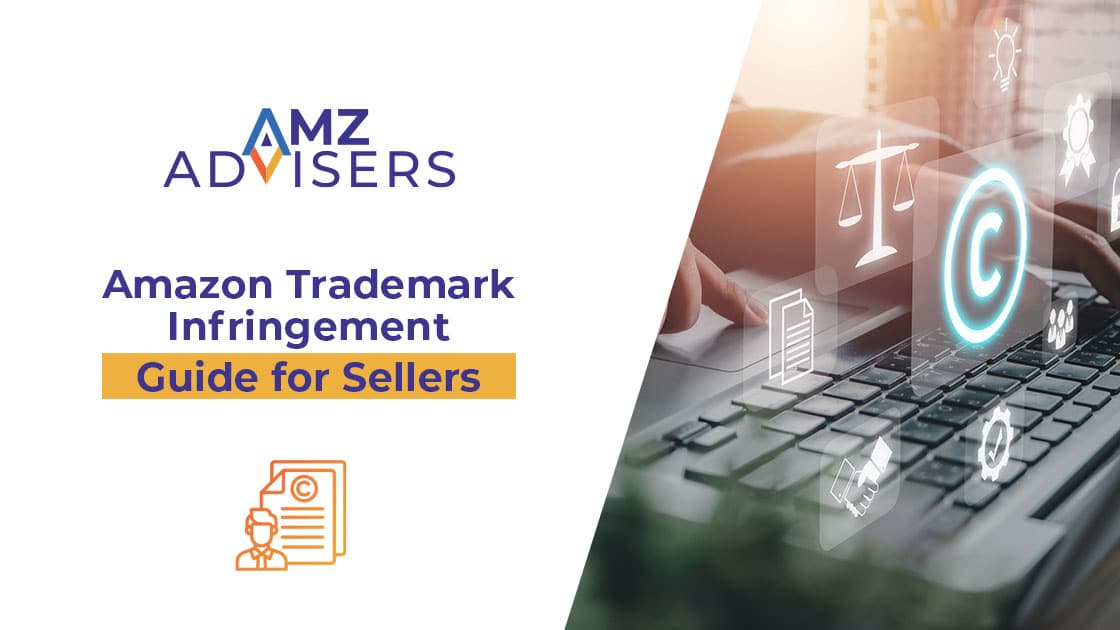If you’ve ever wondered how to make money from Amazon without actually selling anything, then Amazon Affiliates might just be what you’re looking for.
Also known as Amazon Associates, this program provides a pathway for individuals to earn passive income by sharing links to Amazon products.
Here’s what you need to know about building a passive income source with an Amazon affiliate marketing strategy.
What is Affiliate Marketing?
Affiliate Marketing enables online creators to leverage their web traffic to earn commissions by promoting products available. Affiliate marketing helps online creators monetize their own web traffic.
It’s about creating and advertising product links in exchange for a commission. However, affiliates can only earn a fee once a user clicks on the link.
You can divide affiliate marketing into 3 categories:
- Pay-per-sale. Seller pays affiliates for each sale coming from their links.
- Pay-per-click. Affiliates earn a fee once a user clicks on the link.
- Pay-per-lead. Earn commissions on every lead an affiliate generates for sellers.
In Amazon’s case, the Associates program was first introduced in 1998. Since then, it’s evolved into one of the most known affiliate communities in the world, holding 48% of the market share in its field.
There are lots of different things you can promote through the Amazon affiliate program, like electronics, clothes or books. People who join can pick what they want to promote, based on what they like and who they think will buy it.
Related content: How to Acquire an Affiliate Business
How Does Amazon Associates Work?
Associates build unique shopping links, which they can then attach to their content. The goal is to use said links to lead users into Amazon. In return, Amazon gives a fixed referral fee for each click on the affiliate link.
When a potential buyer clicks on an affiliate link, a tracking cookie is placed on their device, allowing you to earn commissions on any eligible purchases made within a specific time frame―usually 24 hours.
Amazon will grant you referrals once customers click on the link and buy a product. So, as you get more clicks, you boost the chances to earn more on commissions.
Note that your affiliate links will make a profit until the cookie expires. However, the 24-hour window gets refreshed each time the same user clicks on your affiliate link.
Amazon Affiliate Commission Rate
Amazon affiliates earn commissions based on a percentage of the total sale amount for each product that they promote through affiliate links. The commission rates vary across different product categories, typically ranging from 1% to 10% or more.
Affiliates can also earn commissions on additional products purchased during the same shopping session, regardless of whether you initially promoted them.
So how much do Amazon affiliates get paid? ZipRecruiter states that the US average salary for Amazon Associates is $77,893 per year. That sum amounts to $37.45/hour, $1,497/week, or $6,491/month.
Affiliate marketing profits depend on a few factors, however. For example: audience size, engagement rate, or niche targeting.
You should also consider Amazon’s commissions for affiliate links. These rates vary greatly, depending on the product category.
Once you accumulate enough commissions, Amazon issues payments through various methods, depending on your location and available payment options:
- Deposit. Amazon will deposit commissions over $10 into your bank account.
- Cheque. The marketplace can deliver a cheque for referrals over $100. Just make sure your mailing address is up to date.
- Gift Cards. Once you have over $10 in referrals, Amazon may send gift cards to your email.
Make sure you consult the commission rates before setting up your links. This way, you’ll figure out an estimated profit, depending on your audience’s engagement.
Additionally, there may be performance-based tiers where you can unlock higher commission rates by achieving specific sales targets or other performance metrics. This incentivizes affiliates to optimize promotional efforts and drive more sales, ultimately leading to increased revenue.
How to Do Affiliate Marketing with Amazon
Once you make sure you check all the boxes to join Amazon associates, it is time to start working on it. These are some easy steps you should follow to get started with your affiliate business:
- Go to Amazon Associates, where you can sign up for the program.
- Submit your site’s URL, and the store ID you’ll sync up with Amazon Associates.
- Complete the register process. You’ll need to provide your website’s URL (if you have one) and a brief description of your site’s content and target audience.
- Outline how you intend to drive trafficand generate revenue. This could include strategies such as content creation, micro-influencer marketing, social media promotion, or email marketing.
- Additionally, you may be asked to provide your monthly visitor count to give Amazon an idea of your website’s reach.
- Enter your payment and tax details. This ensures that you can receive commissions for any sales generated through your affiliate links and that Amazon can comply with tax regulations.
That’s it! You’ll now access your very own Amazon Affiliate dashboard. Here, you can create affiliate links to share them with your followers.
Amazon Associates is free to join for all interested creators. Also, there is no fixed quota to meet. You only need to keep in mind the policies governing the affiliate program. For example:
- State the purpose of your website, your niche audience, and how you attract users.
- Include a site disclosure, stating that you’ll earn Amazon referral for your links.
- Avoid using link shorteners, or making false product claims on your content.
- Don’t state prices for the products that you’ll advertise.
You can review the complete program policies here. You should also review the Amazon Associates Program Operating Agreement here.
Note: New affiliates have 180 days to help Amazon make a sale. If customers don’t use your affiliate links to buy within that period, Amazon will close your account.
How to Build an Amazon Affiliate Marketing Strategy
Now, let’s see how you can create an effective affiliate marketing strategy. The first thing you’ll need is a proper venue for your links.
Amazon Affiliates is better suited for content-related sites. So, if you have a blog or video channel to compliment your shopping site, Amazon Associates might be for you.
We recommend that your site has over 10 entries of unique content. Also, make sure your last entry is no older than 2 months.
You can also use affiliate links on social media, such as Facebook, Twitter and Instagram.
Now that you have Amazon Associates ready to go, it is time to find people who will click your links. This is where marketing strategies come in.
Choose Your Niche
Your niche is the specific topic or category of products that you’ll promote as an affiliate marketer. To choose the right niche, consider your interests, expertise, and the preferences of your target audience.
Conduct research to identify profitable niches with sufficient demand and competition. Aim for a niche that you’re passionate about and that aligns with the needs and interests of your audience. Then, share affiliate links in a creative way:
- Blog away. Create written content that promotes items specific to your market base. Some great examples are reviews, tutorials and comparison posts.
- Rely on visuals. Design infographics or comparison charts. The key is to compile the most important data, and share it with customers in a creative way.
- Promote accessories. Expand your content to item variations or accessories. You’ll increase your content and promote more links to boost conversions.
- Social Media. Drive visibility across all your channels. You can even share links on social media posts, as we said earlier.
- Video content. Let users see the product at work. Create video tutorials that help you share your Amazon links.
Keep your content unique and original. And remember to always let followers know that you are sharing affiliate links.
Also, keep track of all clicks using the Associates dashboard. That way, you’ll know which links are generating more commissions.
Research Products
Once you’ve selected your niche, it’s time to research products to promote. Explore Amazon’s product catalog within your chosen niche and look for popular items that have positive reviews and offer competitive prices.
Pay attention to product specifications, features, and benefits to ensure that they meet the needs and preferences of your audience. Consider using tools like Amazon’s Best Sellers to discover trending and high-converting products.
Explore Different Promotion Channels
Experiment with a variety of promotion channels to identify the most effective ones for your niche and audience.
In addition to traditional channels like your website and social media, consider leveraging other platforms such as social media, online forums, email and influencer marketing.
Each channel offers unique advantages and opportunities for reaching and engaging with your target audience.
Optimize for Search Engines
Implement search engine optimization techniques to improve the visibility and ranking of your content.
Conduct keyword research to identify relevant keywords and phrases that your audience is searching for.
Optimize your content titles, meta descriptions, headings, and image alt texts with target keywords to increase organic traffic to your affiliate links.
Two of the most effective SEO strategies are backlinks and content hubs.
Backlinks
Backlinks are the key to Google’s algorithm. It’s what drives a site’s organic traffic up the search ranks.
The idea is to search for links directly related to your content. Then, you can include them in your posts to boost online traffic.
With such a strategy, you’ll increase online traffic. But you’ll also boost the chances of visitors using your affiliate links.
Content Hubs
These are collections of related content, which can web together to drive visibility. A content hub is made of three elements:
- The hub page, which is a general, but high-level guide about a specific topic.
- The subpages, composed of detailed content, related to the main subject.
- The hyperlinks that connect all the hubs and subpages.
Content hubs can boost the success of keywords. Plus, all pages within a content hub get some benefit from the shared backlinks.
Utilize Paid Advertising
Consider investing in paid ads to amplify the reach of your affiliate promotions and drive targeted traffic to your content.
Platforms like Google Ads, Facebook Ads, Instagram Ads, and Pinterest Ads offer robust targeting options to reach specific demographics, interests, and behaviors.
Experiment with different ad formats, targeting parameters, and budget allocations to optimize your ad campaigns for maximum ROI.
Create Visual Content
Images, infographics and videos can significantly enhance the effectiveness of your affiliate promotions.
Use high-quality visuals to showcase products, demonstrate features, and highlight benefits in a visually compelling way.
Incorporate your affiliate links within your visual content and include clear calls-to-action prompting viewers to click and learn more.
Engage with Your Audience
Building a strong relationship with your audience is essential for driving engagement and conversions. Foster two-way communication by encouraging comments, questions, and feedback on your content.
Respond promptly and thoughtfully to audience inquiries and comments to demonstrate your expertise and build trust. Engage with your audience authentically, both online and offline, to establish a loyal and supportive community around your affiliate marketing efforts.
Offer Incentives and Discounts
Encourage conversions by offering incentives and discounts to your audience. Negotiate exclusive discounts or special offers with product vendors or leverage affiliate-exclusive promotions provided by Amazon.
Highlight these incentives in your content and CTAs to drive clicks and purchases. Limited-time offers and bonuses can create a sense of urgency and drive immediate action from your audience.
Monitor and Analyze Results
If you want to grow, you need to know what strategies are working and keep investing time in them. Monitor your content across different platforms to identify what works for your audience. Then, build future strategies based on that.
Remember that every minute you work is valuable, so it is better to spend it on something that leads to results.
Amazon Affiliate Link Generator
Now, let’s see how to create affiliate links on the Amazon Associates dashboard:
- Go to Product Linking on the navigation bar, and click on Product Links.
- Submit an ASIN or keyword to find the item you’ll promote. Then, click on Go.
- Choose a specific product from the list. Now, press the Get Link button.
- Now you can use the affiliate link as-is. But you can also customize it as a unique banner.
Affiliates can also use the SiteStripe to create links. This is a small bar that appears on Amazon product pages.
The SiteStripe allows you to create different affiliate link types. Once you’re done, you can embed or copy the link to your channels.
Final Thoughts
Amazon affiliate marketing can be a nice way to monetize your audience.It can help you turn your blog or video channel into a source of passive income
It is important to remember, though, that this is not a get-rich-quick game. An affiliate marketing strategy requires time and effort to reach a substantial income, but if you understand what your audience needs and how to deliver that, you should be on the right track.
And remember that experimenting with different strategies to understand what works for you.
So, channel your marketing skills into Amazon Associates. Choose a product, design compelling content, and include your affiliate links.
Author
Esteban Muñoz is a content writer with several years’ experience in digital marketing and ecommerce. He’s been able to achieve incredible growth for his associates by optimizing and managing their accounts, and creating in-depth content marketing strategies.






